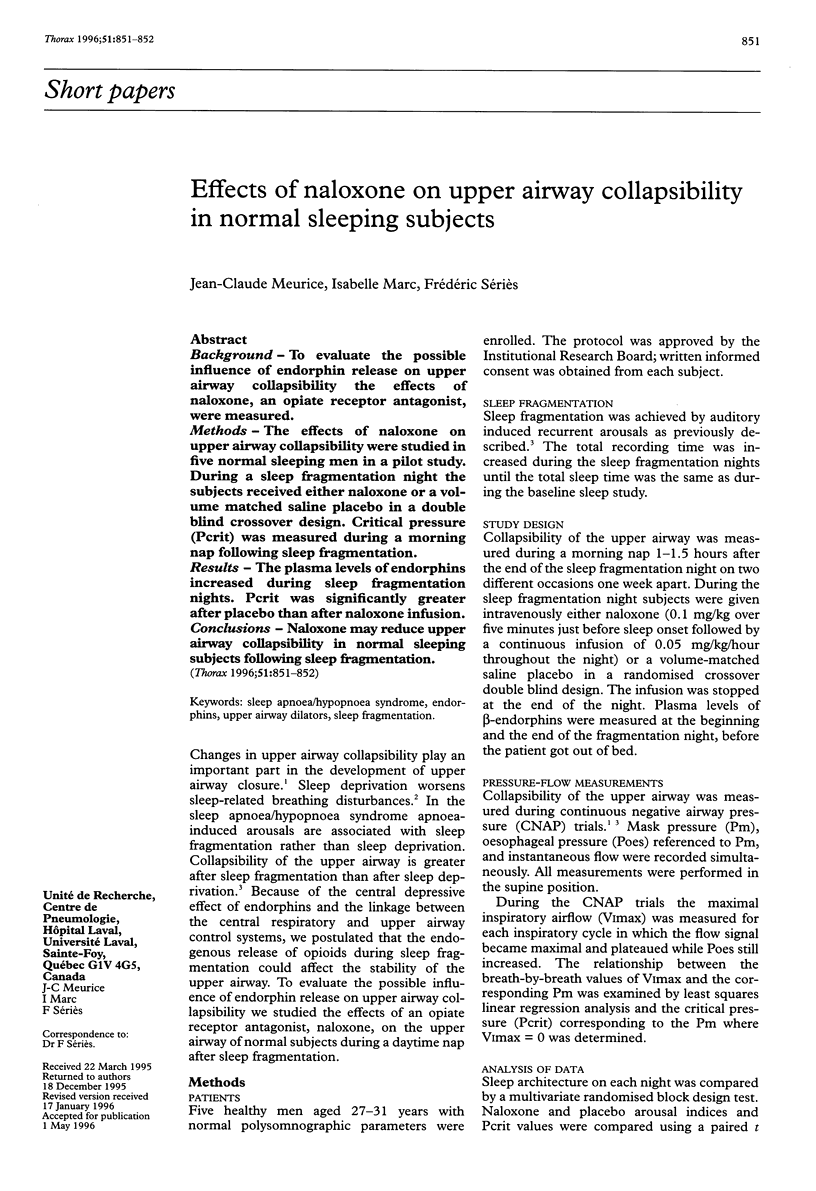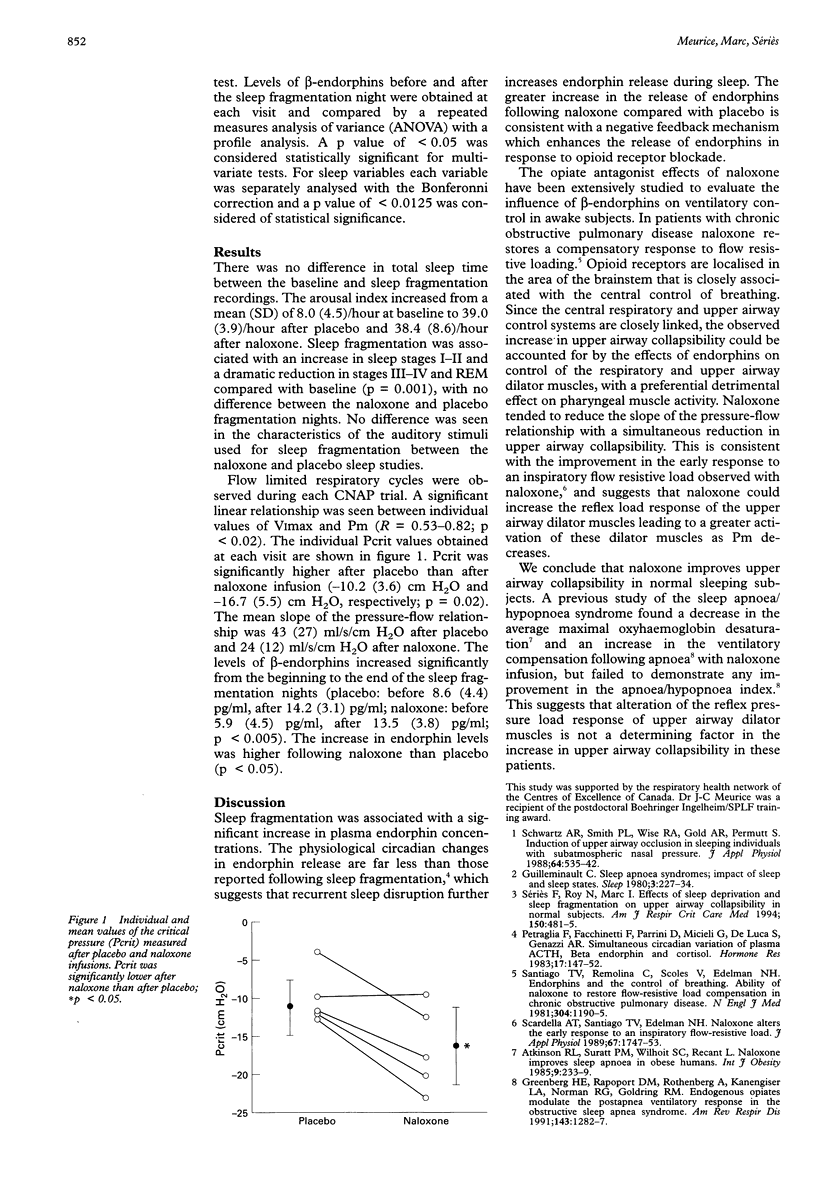Abstract
BACKGROUND: To evaluate the possible influence of endorphin release on upper airway collapsibility the effects of naloxone, an opiate receptor antagonist, were measured. METHODS: The effects of naloxone on upper airway collapsibility were studied in five normal sleeping men in a pilot study. During a sleep fragmentation night the subjects received either naloxone or a volume matched saline placebo in a double blind crossover design. Critical pressure (Pcrit) was measured during a morning nap following sleep fragmentation. RESULTS: The plasma levels of endorphins increased during sleep fragmentation nights. Pcrit was significantly greater after placebo than after naloxone infusion. CONCLUSIONS: Naloxone may reduce upper airway collapsibility in normal sleeping subjects following sleep fragmentation.
Full text
PDF

Selected References
These references are in PubMed. This may not be the complete list of references from this article.
- Atkinson R. L., Suratt P. M., Wilhoit S. C., Recant L. Naloxone improves sleep apnea in obese humans. Int J Obes. 1985;9(4):233–239. [PubMed] [Google Scholar]
- Greenberg H. E., Rapoport D. M., Rothenberg S. A., Kanengiser L. A., Norman R. G., Goldring R. M. Endogenous opiates modulate the postapnea ventilatory response in the obstructive sleep apnea syndrome. Am Rev Respir Dis. 1991 Jun;143(6):1282–1287. doi: 10.1164/ajrccm/143.6.1282. [DOI] [PubMed] [Google Scholar]
- Guilleminault C. Sleep apnea syndromes: impact of sleep and sleep states. Sleep. 1980;3(3-4):227–234. doi: 10.1093/sleep/3.3-4.227. [DOI] [PubMed] [Google Scholar]
- Petraglia F., Facchinetti F., Parrini D., Micieli G., De Luca S., Genazzani A. R. Simultaneous circadian variations of plasma ACTH, beta-lipotropin, beta-endorphin and cortisol. Horm Res. 1983;17(3):147–152. doi: 10.1159/000179690. [DOI] [PubMed] [Google Scholar]
- Santiago T. V., Remolina C., Scoles V., 3rd, Edelman N. H. Endorphins and the control of breathing. Ability of naloxone to restore flow-resistive load compensation in chronic obstructive pulmonary disease. N Engl J Med. 1981 May 14;304(20):1190–1195. doi: 10.1056/NEJM198105143042002. [DOI] [PubMed] [Google Scholar]
- Scardella A. T., Santiago T. V., Edelman N. H. Naloxone alters the early response to an inspiratory flow-resistive load. J Appl Physiol (1985) 1989 Nov;67(5):1747–1753. doi: 10.1152/jappl.1989.67.5.1747. [DOI] [PubMed] [Google Scholar]
- Schwartz A. R., Smith P. L., Wise R. A., Gold A. R., Permutt S. Induction of upper airway occlusion in sleeping individuals with subatmospheric nasal pressure. J Appl Physiol (1985) 1988 Feb;64(2):535–542. doi: 10.1152/jappl.1988.64.2.535. [DOI] [PubMed] [Google Scholar]
- Sériès F., Roy N., Marc I. Effects of sleep deprivation and sleep fragmentation on upper airway collapsibility in normal subjects. Am J Respir Crit Care Med. 1994 Aug;150(2):481–485. doi: 10.1164/ajrccm.150.2.8049833. [DOI] [PubMed] [Google Scholar]


